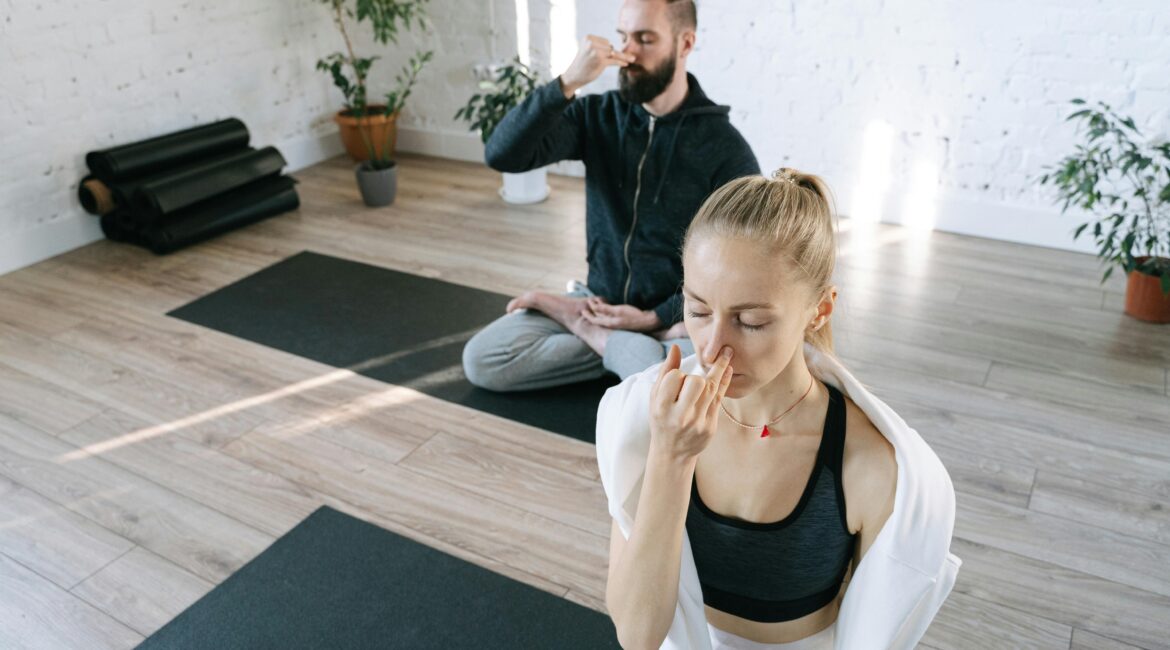Anxiety is something many of us experience in our daily lives, whether it’s due to work pressures, personal challenges, or the constant barrage of news and social media. In those moments of anxiety, our bodies go into “fight or flight” mode, and we may feel overwhelmed by rapid heartbeat, shallow breathing, or a sense of tightness in the chest. However, one of the most powerful and immediate tools we have to combat anxiety is right at our fingertips, our breath.
Breathing exercises can activate the parasympathetic nervous system, which is responsible for calming the body down after stress. By practicing mindful breathing techniques, you can instantly reduce the physical and mental symptoms of anxiety. Here are five simple breathing exercises to help restore calm and clarity.
4-7-8 Breathing
Why it works: This technique is inspired by ancient yogic practices and is known for its calming effects on the nervous system. The 4-7-8 breathing exercise helps slow down the heart rate, relax the mind, and alleviate feelings of anxiety.
How to do it:
- Begin by sitting or lying down in a comfortable position.
- Inhale quietly through your nose for a count of 4.
- Hold your breath for a count of 7.
- Exhale completely through your mouth, making a whooshing sound, for a count of 8.
- Repeat this cycle 3-4 times, or until you begin to feel a sense of calm.
Tip: Make sure to exhale completely, as this encourages your body to release built-up tension.
Box Breathing
Why it works: Box breathing is a simple yet effective technique used by athletes, military personnel, and yogis to maintain focus and calm. It involves equal-length inhales, holds, and exhales, creating a steady rhythm that helps ground your mind and body.
How to do it:
- Sit comfortably with your back straight and shoulders relaxed.
- Inhale deeply through your nose for a count of 4.
- Hold your breath for a count of 4.
- Exhale slowly through your mouth for a count of 4.
- Hold your breath again for a count of 4.
- Repeat the cycle 3-5 times.
Tip: If a 4-count feels too long, start with a shorter count (such as 3 or 2) and gradually build up as you become more comfortable with the technique.
Diaphragmatic Breathing
Why it works: Diaphragmatic breathing encourages deeper, slower breaths that activate the diaphragm, rather than shallow chest breathing. This deep breathing technique helps to release tension, lower blood pressure, and reduce stress.
How to do it:
- Find a comfortable position, either sitting or lying down, and place one hand on your chest and the other on your abdomen.
- Inhale slowly through your nose, expanding your diaphragm so that your abdomen rises (your chest should remain relatively still).
- Exhale slowly and completely through your mouth, allowing your abdomen to fall.
- Continue this process for 5-10 minutes, focusing on the rise and fall of your abdomen with each breath.
Tip: If you find your chest rising, gently redirect your focus to your diaphragm, ensuring your belly is expanding with each inhale.
Alternate Nostril Breathing
Why it works: Alternate nostril breathing is a calming and balancing exercise that helps to regulate the flow of breath, synchronize the left and right hemispheres of the brain, and reduce stress. It’s particularly effective for creating a sense of calm and mental clarity.
How to do it:
- Sit comfortably with your spine straight and shoulders relaxed.
- Using your right thumb, close off your right nostril.
- Inhale deeply through your left nostril.
- Close your left nostril with your right ring finger, and release your right nostril.
- Exhale slowly through your right nostril.
- Inhale deeply through your right nostril.
- Close your right nostril with your thumb, and release your left nostril.
- Exhale slowly through your left nostril.
- Repeat for 5-10 rounds.
Tip: Focus on your breath and try to make each inhale and exhale smooth and controlled. If your mind wanders, gently bring your attention back to the flow of breath.
Resonant or Coherent Breathing
Why it works: Resonant breathing, also known as coherent breathing, involves breathing at a rate of about five breaths per minute. This technique helps to balance the autonomic nervous system, calming the body and mind by promoting deep, even breaths.
How to do it:
- Sit or lie down in a relaxed position.
- Inhale for a count of 5, then exhale for a count of 5, ensuring that both the inhale and exhale are smooth and even.
- Continue this breathing pattern for 5-10 minutes, focusing on the even rhythm of your breath.
Tip: You may want to use a timer or app that tracks your breathing, helping you to maintain the 5-second rhythm.
Breathing exercises are a powerful tool that you can carry with you wherever you go. They’re quick, effective, and require no special equipment, just your breath. By incorporating these techniques into your daily routine or using them in moments of heightened anxiety, you can bring yourself back into a place of calm, clarity, and balance.
Start by practicing one or two of these breathing exercises daily, and soon you’ll be able to call on them whenever you need a moment of peace. Remember, wellness is about small, consistent steps toward taking care of your body and mind, and your breath is always there to guide you toward tranquility.






